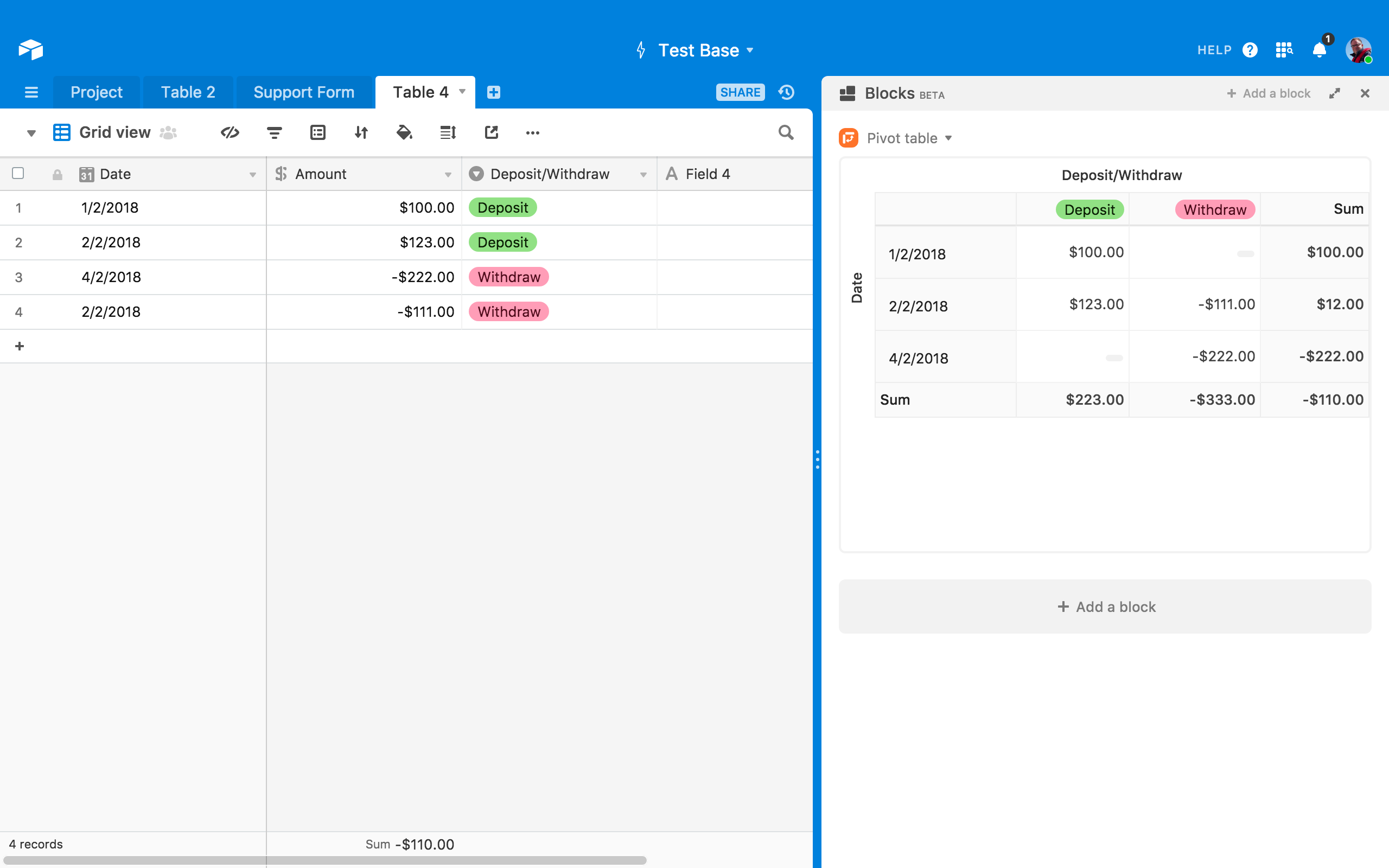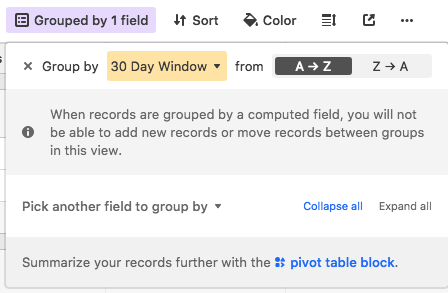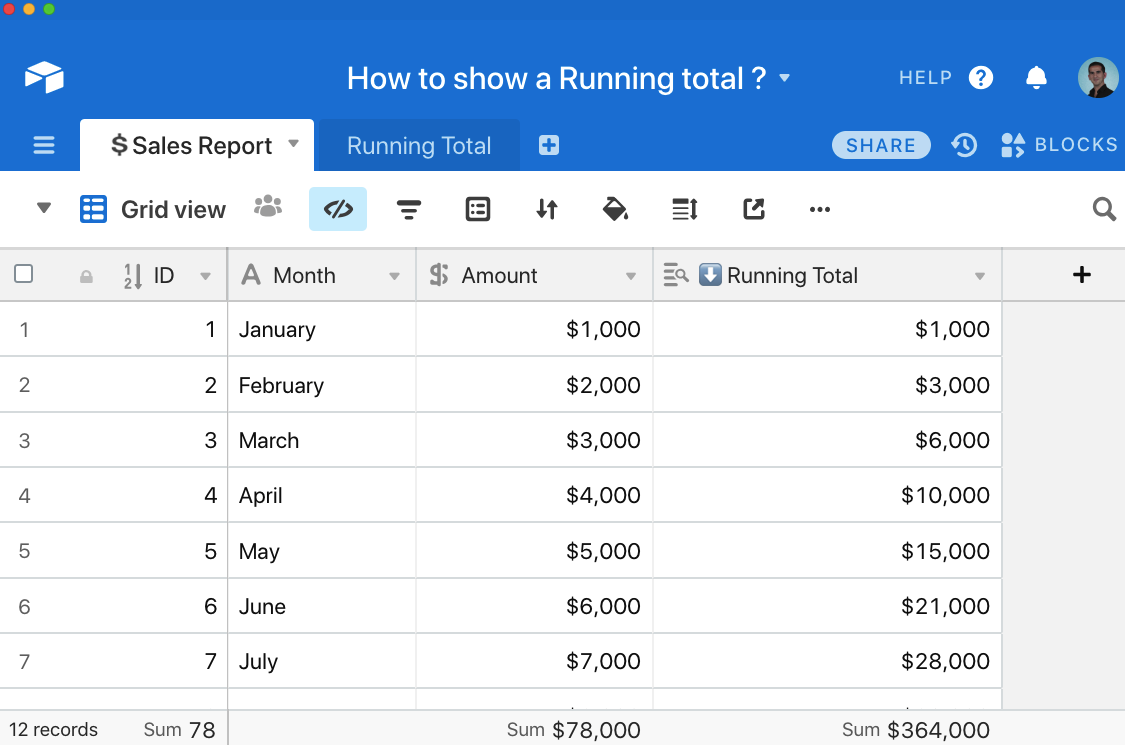I’m not able to find an Airtable example of a simple checkbook register. Balance = Previous Balance - Debit + Credit. How would you do that in Airtable?
How to create a running total or balance
Enter your E-mail address. We'll send you an e-mail with instructions to reset your password.









